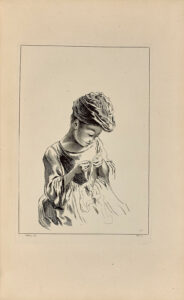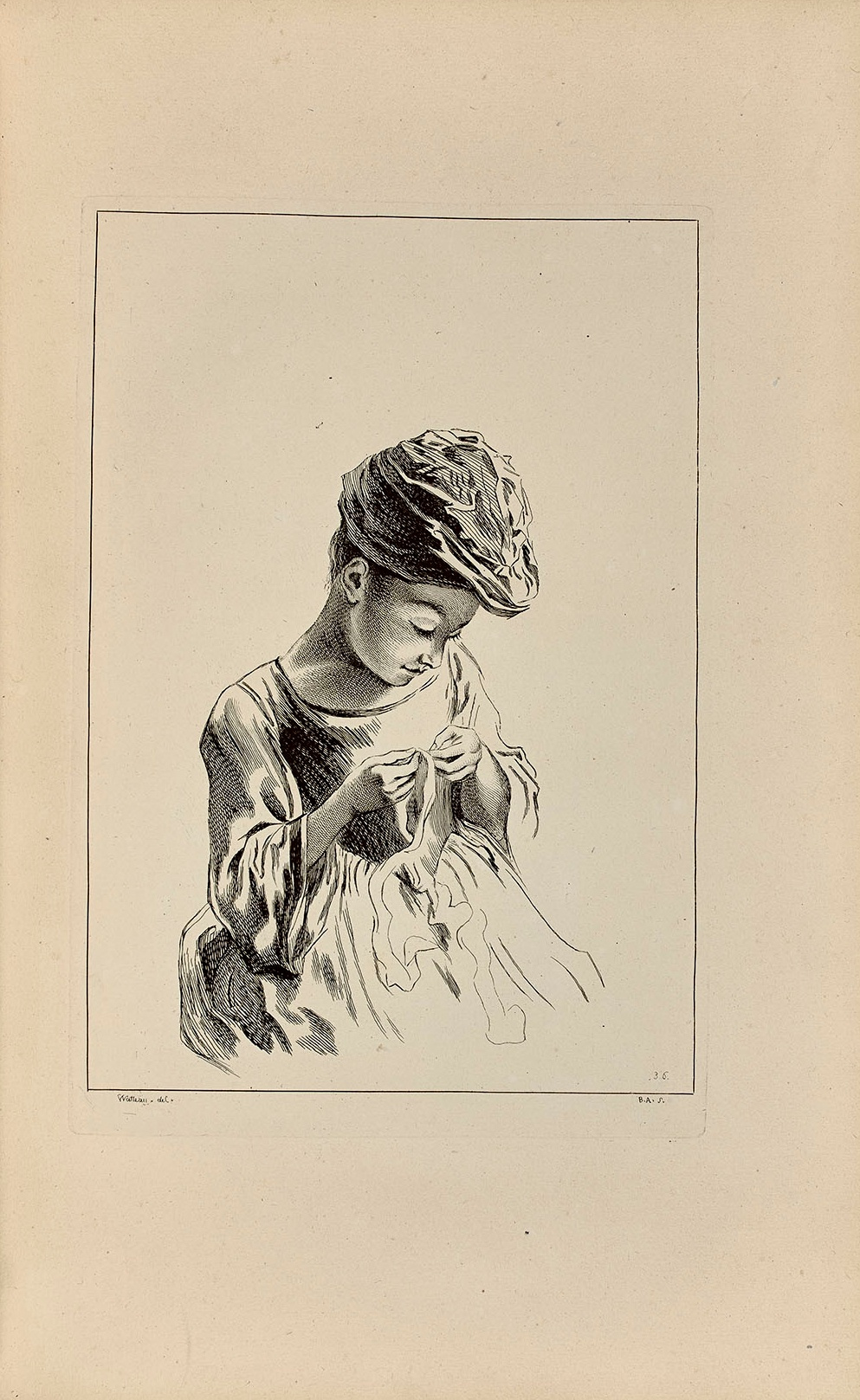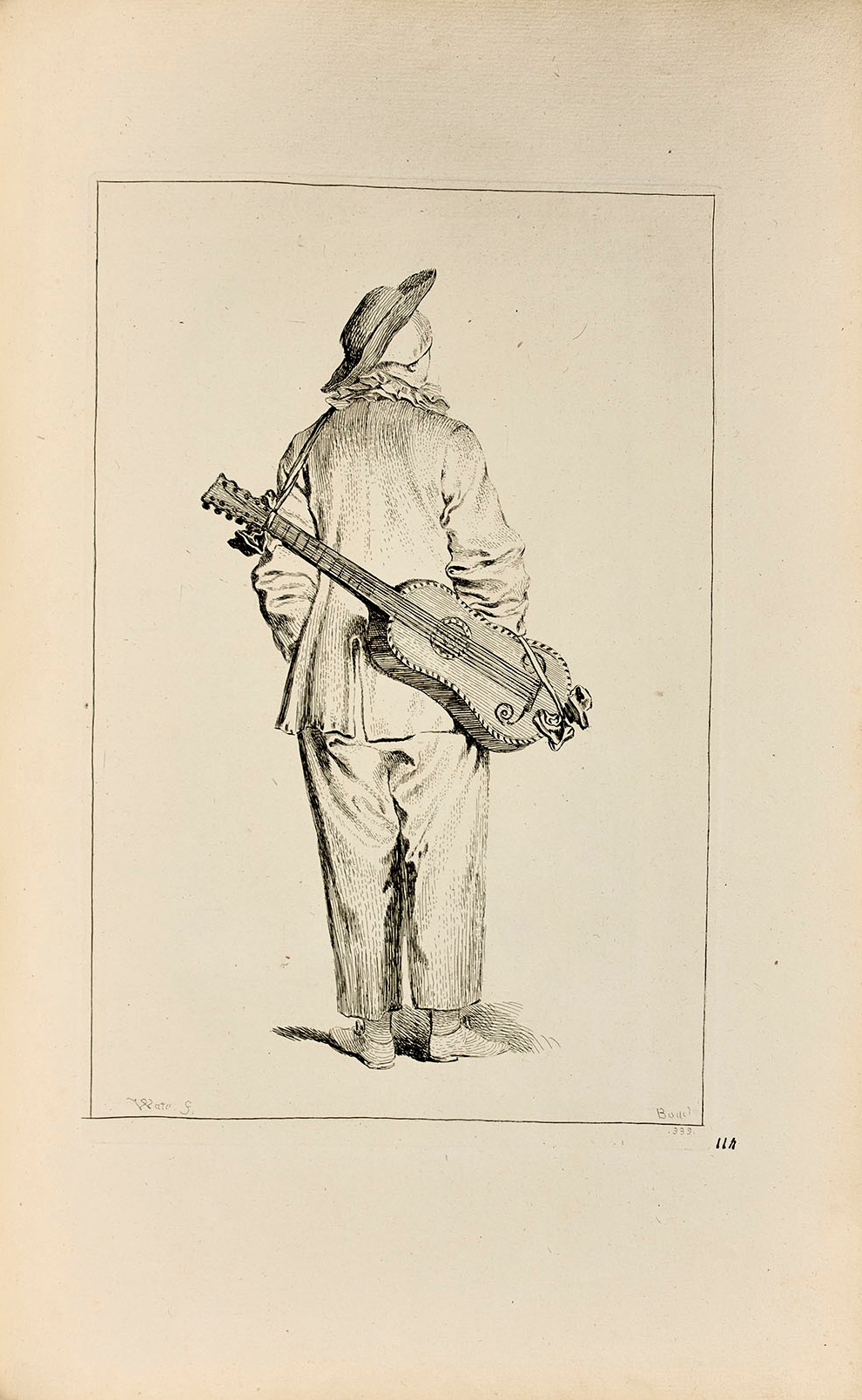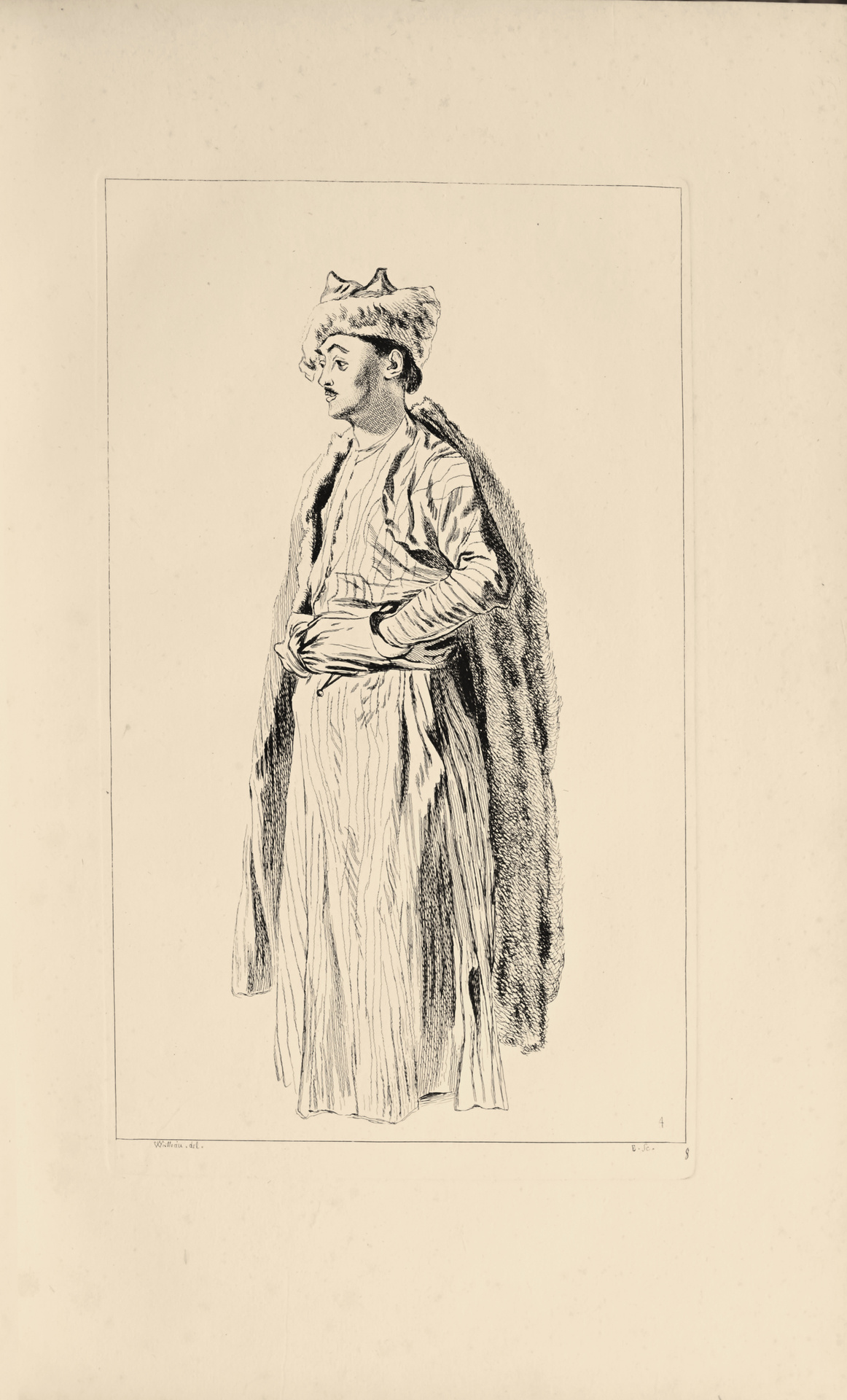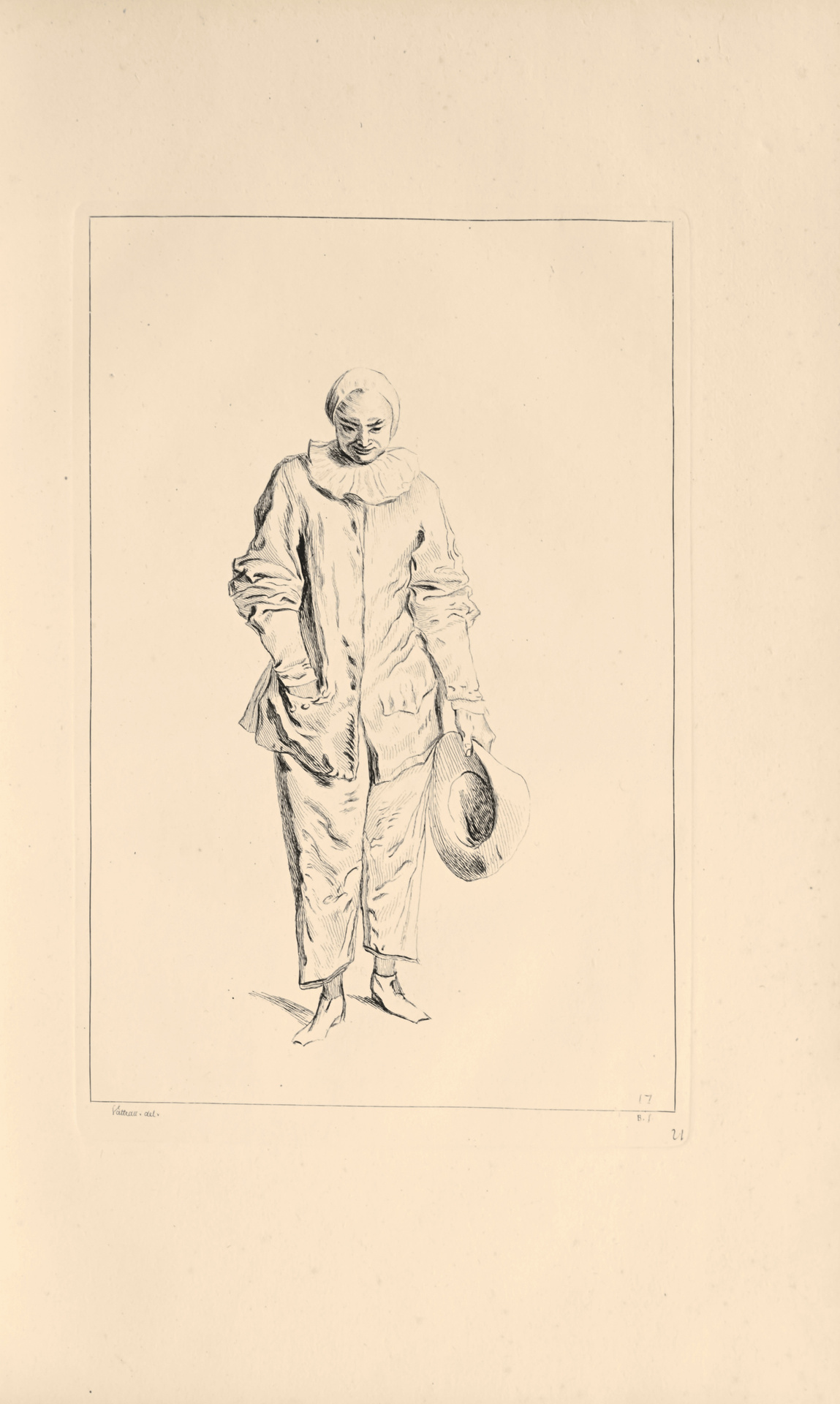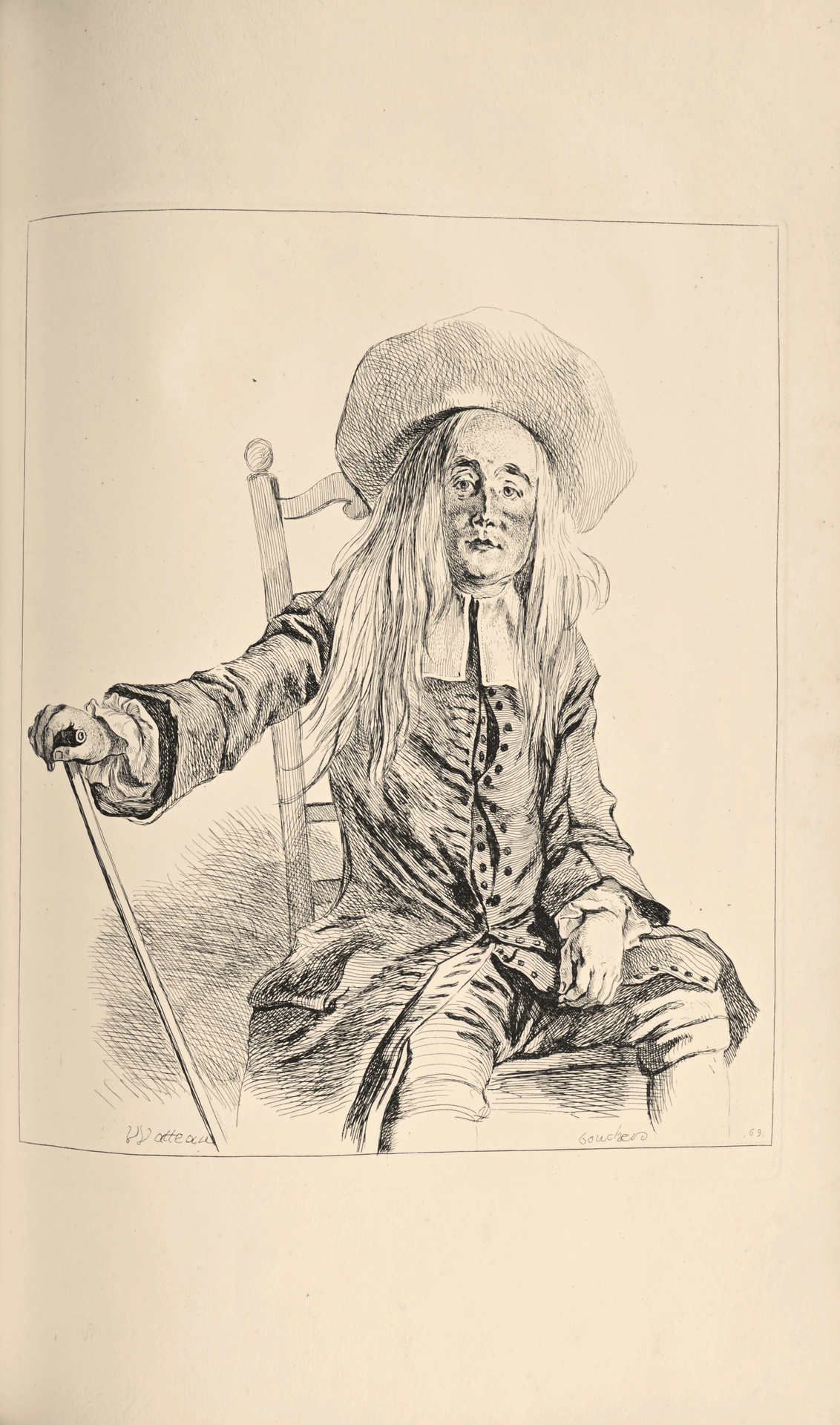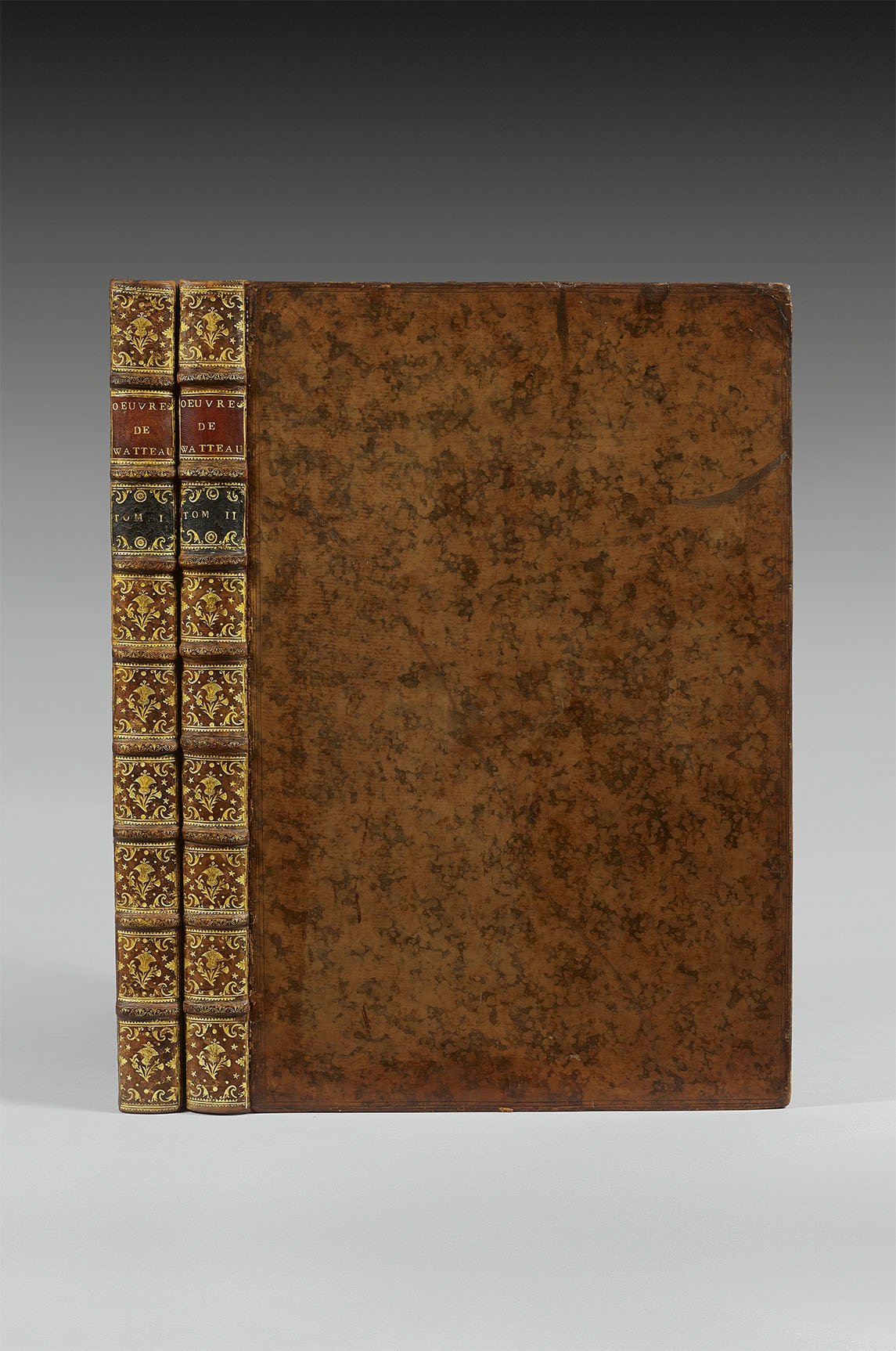Paris, Audran et Chereau, [1726-1728].
2 volumes folio [495 x 325 mm] of : I/ (4) engraved ll. (frontispiece drawn and engraved by Boucher, epitaph and Watteau’s self-portrait engraved by Boucher) and 101 plates showing 132 numbered subjects. Without the title, la Vie (2 ll.) and the foreword (1 l.), engraved, that were never bound in the copy (see below) ; II/ 121 plates showing subjects numbered from 133 to 350 and 1 unnumbered engraving between engravings 270 and 271. Without the title and the notice to the reader.
Marbled calf, blind-stamped triple fillet around the covers, spines decorated with fillets, fleurons and stars, lettering pieces in red and black morocco, gilt edges. Contemporary binding.
First edition and first issue « of this precious collection » (Cohen, col. 1064), one of the most beautiful and rare French illustrated books of all times.
« This edition, the only good one, is very rare ». (Cohen, col. 1064).
Sander, Illustrierten franz ö sischen Bücher des 18. Jahrhunderts, 2042 ; Berny, Livres anciens, romantiques et modernes, III, …, 90 ; Esmerian, XVIIIe siècle, livres illustrés, 107.
Precious and famous copy mentioned by cohen (col. 1056) coming from Comte Greffulhe and Andre Langlois’s libraries.
The « Julienne collection », the most beautiful and rarest 18th century collection of engravings, was composed by Watteau’s friend and protector, Jean de Julienne, who surrounded himself, shortly after Watteau’s death, with about thirty well-known artists in order to spread his friend’s work. The publishing work took a dozen years. The four volumes (in which Figures de différents caractères is dedicated to drawings and l’Oeuvre to his paintings and ornaments) were printed at home, at the Gobelins Manufacture.
The engraving work started in 1717, that is to say four years before Antoine Watteau’s death. The Figures de différents caractères were offered for sale in 1726 and 1728 (and the Œuvre in 1735). Julienne called on the greatest artists of that time : fifteen engravers worked on the Figures de différents caractères, including Jean Audran (131 pieces), Cochin Father, Nicolas Silvestre, Laurent Cars and François Boucher who was nineteen years old then and who engraved 105 pieces. Jean de Julienne himself, his friend Comte of Caylus and maybe Montullé, Julienne’s first cousin, engraved about fifteen pieces.
In all, 352 engravings immortalizing Watteau’s drawings : besides his self-portrait, most of them are studies of characters for his paintings of scenes of gallantry or Italian comedy, but also small craftsmen, women in their daily life and exotic characters.
Julienne’s personal taste, amateur aquafortist, influences the engravers’ technique. The latter used etching to create an atmosphere with light, evanescent values, that chisel couldn’t express.
This work was very successful and the engravings were hung in every French home, and also in England and Germany.
A few years after the publication of Figures de différents caractères in 1726-1728, the two volumes of Watteau’s Œuvre were published in 1735; the Comte of Greffulhe initially owned these four volumes: the Figures in 2 folio volumes and the Œuvre in 2 large folio volumes.
It is mentioned by Cohen in his description of the Oeuvre among the very rare known copies (col. 1056). All the volumes were entitled L’Oeuvre on the spine, which is the reason why the 2 volumes of Figures bear this title on the spines too, and it explains the (original) absence of the titles, the foreword and of Watteau’s life, that were replaced by Boucher’s frontispiece, bound here at the beginning of the first part instead of generally at the beginning of the second part.
This Comte Greffulhe’s superb copy ranks among the rare copies preserved in their elegant contemporary binding in fine condition.
The copy then entered André Langlois’ library, one the most distinguished provenances for 18th century beautiful illustrated books.
In May 2000, seventeen years ago, a copy of these two volumes of Figures de différents caractères in an English restored binding was sold for 350 000 F (approximately 53 300 €) (Ref : Livres précieux – mai 2000, n° 140).
